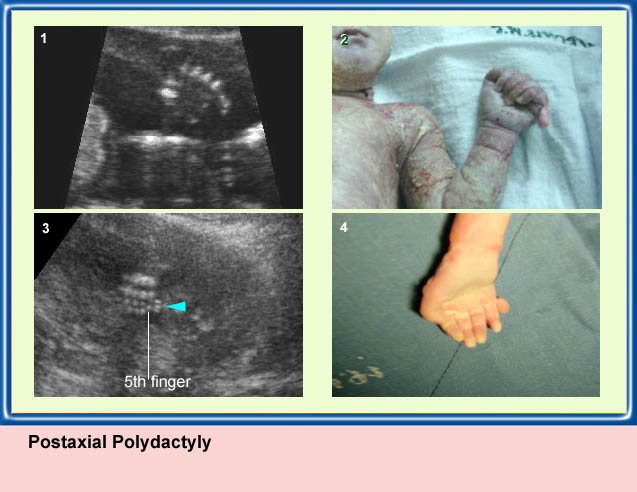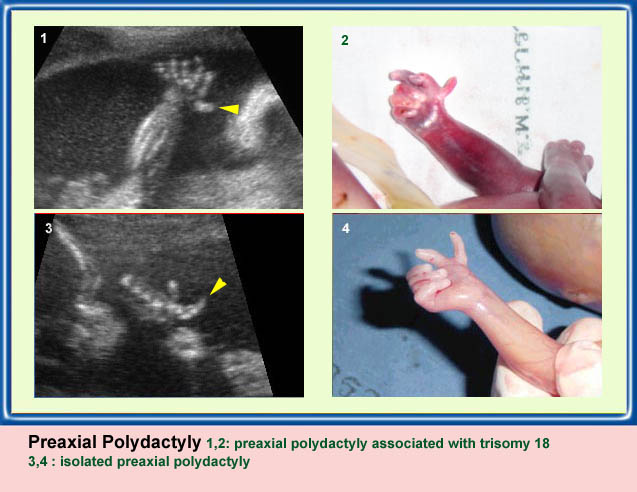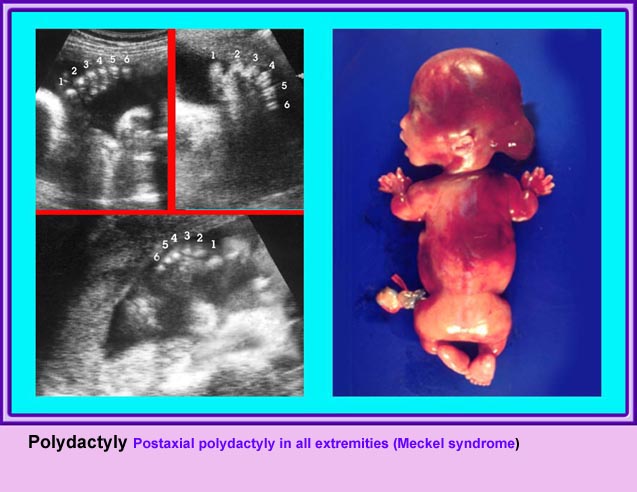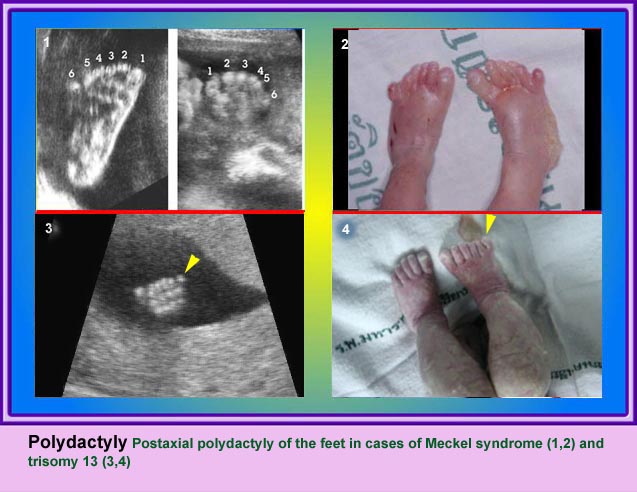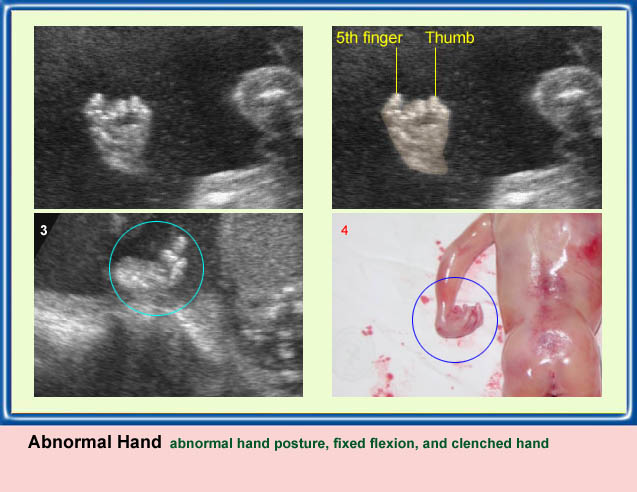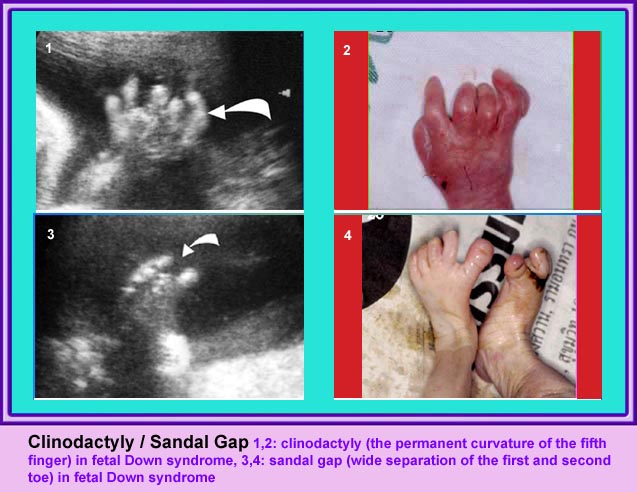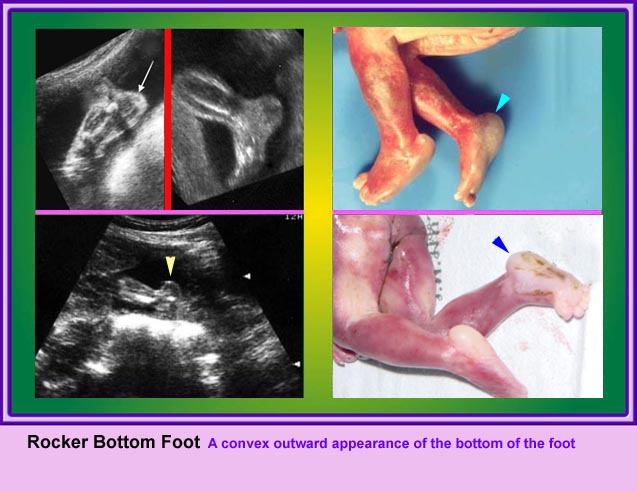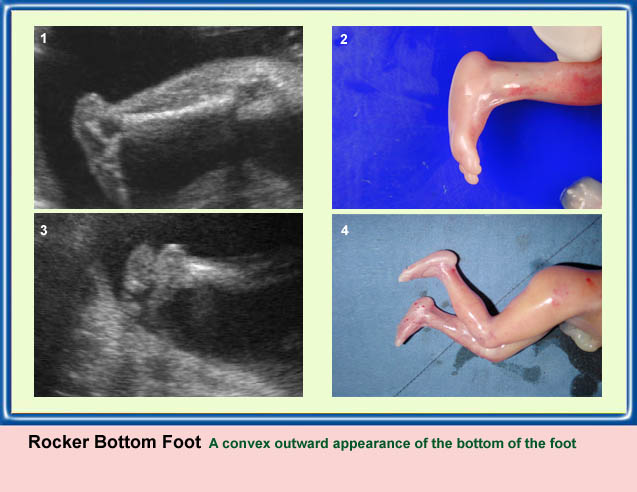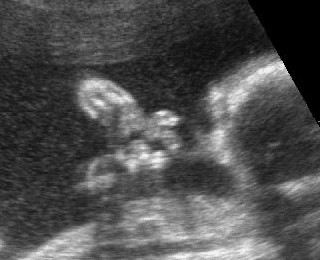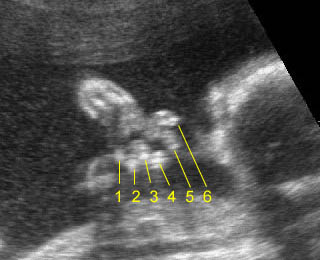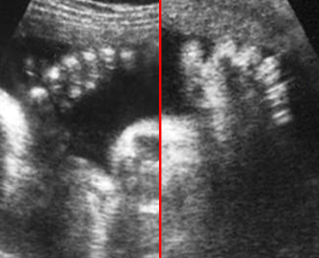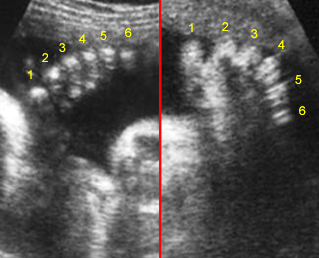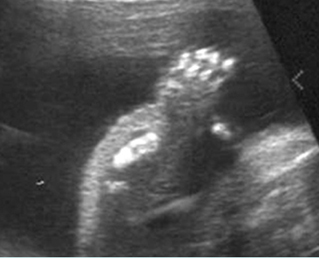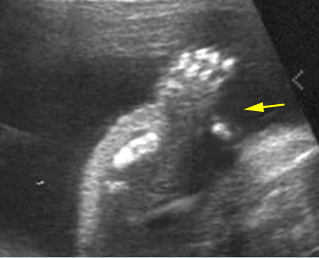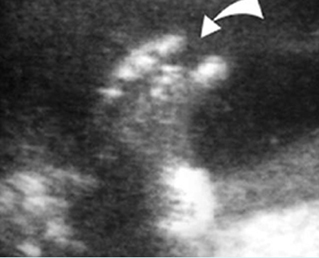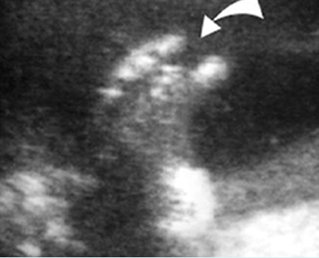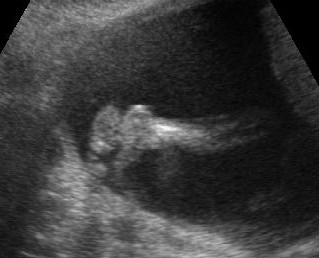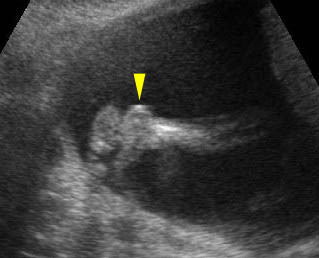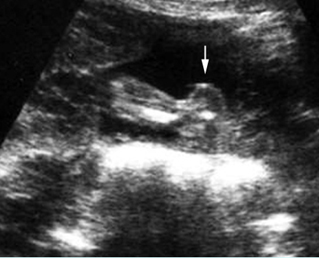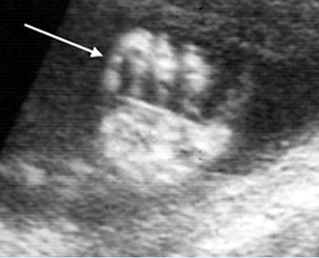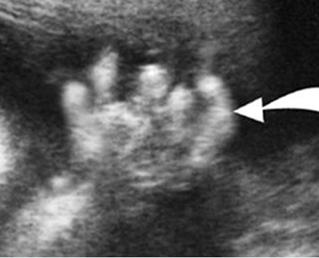Disorders of Hands / Feet: ความผิดปกติของมือหรือเท้า
นิ้วเกิน (Polydactyly)
ภาวะนิ้วเกิน แบ่งออกได้เป็นสองชนิด คือ เกินทางด้าน radial (preaxial) และเกิดทางด้าน ulna (postaxial) สามารถตรวจพบได้ด้วยคลื่นเสียงความถี่สูงก่อนคลอด บ่อยครั้งที่ภาวะนิ้วเกิน เป็นส่วนหนึ่งของกลุ่มอาการผิดปกติจำนวนมาก ซึ่งกลุ่มอาการเหล่านั้นจะเป็นตัวบอกพยากรณ์โรค ลำพังเพียงนิ้วเกินอย่างเดียวไม่ถือว่าเป็นความผิดปกติที่รุนแรงแต่ประการใด กลุ่มอาการที่มีภาวะนิ้วเกินได้บ่อย ๆ เช่น
- Trisomy 13
- Ellis-van Creveld syndrome
- Hypophosphatasia
- Hypochondroplasia
- Jeune syndrome
- Short rib-polydactyly syndrome
- Smith-Lemli-Opitz syndrome
- Joubert syndrome
- Meckel-Gruber syndrome
- Oral-facial-digital syndrome
นิ้วติดกัน (Syndactyly)
จากคลื่นเสียงอาจสงสัยเมื่อตรวจพบว่านิ้วอยู่ติดกันตลอด ไม่เปลี่ยนแปลง ในกรณีที่เป็นความผิดปกติเดี่ยว ๆ จะวินิจฉัยได้ยากมาก การเห็นทารกกางแยกนิ้วออกจากกันได้สามารถตัดปัญหานี้ออกไปได้
Rocker bottom foot
ส้นเท้านูนเด่นมากปิดปกติ เกิดจากกระดูก calcaneous โตผิดปกติ อาจสัมพันธ์กับความผิดปกติของโรคหลายชนิด ที่พบได้บ่อยที่สุดคือ trisomy 18 และ trisomy 13
Clinodactyly
นิ้วโก่งโค้งเข้าด้านใน โดยเฉพาะการฝ่อหรือหายไปของกระดูกนิ้วข้อกลางของนิ้วก้อย ซึ่งสัมพันธ์กับทารกกลุ่มอการดาวน์ ทำให้นิ้วก้อยโค้งเข้าด้านใน
Sandal gap
นิ้วหัวแม่เท้า และนิ้วที่สอง แยกห่างกันมากผิดปกติ พบได้บ่อยขึ้นทารกที่เป็นกลุ่มอาการดาวน์
Polydactyly (pre-axial)
Free floating visceral structures, bowel and liver (solid circles), in the amniotic fluid
Polydactyly (post-axial)
Hitchhiker thumb
Abnormal posture and wide separation of the thumb in the fetus with diastrophic dysplasia
Sandal gap
Gapping between the first and second toe (arrow) in association with Down syndrome
Rocker bottom foot
Prominent calcaneous bone
Rocker bottom foot
Prominent calcaneous bone (arrow) associated with trisomy 13
Clinodactyly
Scan of the hand: disproportionately small middle phalange of the fifth finger (arrow
Clinodactyly
Curved-in position of the fifth finger (arrow) of the fetus with trisomy 21
Classic Images
